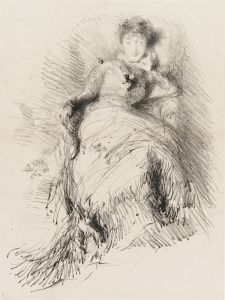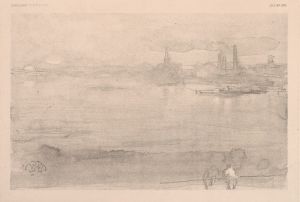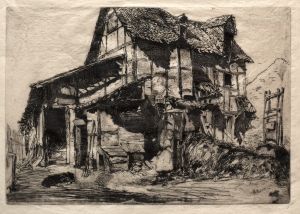
Gants de Suède
A hand-painted replica of James Abbott McNeill Whistler’s masterpiece Gants de Suède, meticulously crafted by professional artists to capture the true essence of the original. Each piece is created with museum-quality canvas and rare mineral pigments, carefully painted by experienced artists with delicate brushstrokes and rich, layered colors to perfectly recreate the texture of the original artwork. Unlike machine-printed reproductions, this hand-painted version brings the painting to life, infused with the artist’s emotions and skill in every stroke. Whether for personal collection or home decoration, it instantly elevates the artistic atmosphere of any space.
James Abbott McNeill Whistler was an American artist known for his paintings, etchings, and lithographs. He was a leading figure in the Aesthetic Movement, which emphasized the visual and sensual qualities of art and design over practical, moral, or narrative considerations. One of his lesser-known works is "Gants de Suède," which translates to "Swedish Gloves."
Whistler was born in Lowell, Massachusetts, in 1834, and spent much of his early life in Russia and England. He studied art in Paris, where he was influenced by the Realist movement and the works of Gustave Courbet. Whistler's style evolved over time, and he became known for his innovative approach to portraiture and his use of color and composition.
"Gants de Suède" is a portrait that exemplifies Whistler's unique style, characterized by its subtlety and attention to detail. The painting features a woman wearing elegant Swedish gloves, which are the focal point of the composition. Whistler's use of soft, muted colors and delicate brushwork creates a sense of intimacy and refinement. The subject's pose and expression convey a sense of calm and introspection, typical of Whistler's portraits.
Whistler was known for his belief in "art for art's sake," a philosophy that emphasized the importance of beauty and aesthetic experience over narrative content. This approach is evident in "Gants de Suède," where the emphasis is on the visual harmony and elegance of the composition rather than any specific story or message. The painting reflects Whistler's interest in the interplay of light and shadow, as well as his skill in capturing the textures of different materials, such as the softness of the gloves and the sheen of the fabric.
Throughout his career, Whistler was a controversial figure, often clashing with art critics and the public over his unconventional ideas and methods. He was involved in several high-profile legal battles, most notably with the art critic John Ruskin, who accused Whistler of "flinging a pot of paint in the public's face" with his abstract works. Despite these controversies, Whistler's contributions to the art world were significant, and he is remembered as a pioneer of modern art.
Whistler's work, including "Gants de Suède," has been exhibited in major museums and galleries around the world. His paintings are celebrated for their beauty, technical skill, and innovative approach to composition and color. Whistler's influence can be seen in the work of later artists, including the Impressionists and the Symbolists, who admired his ability to capture mood and atmosphere.
In summary, "Gants de Suède" is a testament to James Abbott McNeill Whistler's artistic vision and his commitment to the principles of the Aesthetic Movement. The painting's focus on beauty, elegance, and the sensory experience of art exemplifies Whistler's belief in the power of art to transcend narrative and evoke emotion through visual means.


















